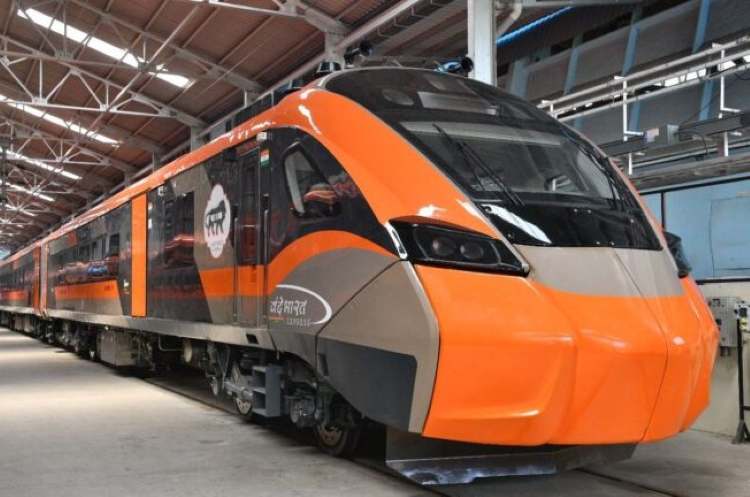The decision to expand the fleet of Vande Bharat trains is welcome, but the applause should not drown out a simple question — what purpose do these gleaming machines truly serve? The prime minister has referred to modern rail corridors as part of the Amrit Kaal of infrastructure transformation. But beyond the gloss of speed and new routes lies a deeper question. Are we simply building trains or building growth corridors? And if the answer tilts towards the former, are we missing the chance to amplify regional productivity, logistics capacity and inclusive development?
High‐speed trains serve a potent political narrative. The image of a sleek Vande Bharat zipping between state capitals appeals to headline-grabbers and election manifestoes. For the rail ministry the target is clear: 200 new units in the next two to three years. Yet infrastructure is not merely about ribbon‐cutting. It is about deployment and use-cases. In the zeal to roll out glamorous assets, we risk favouring high-visibility states and routes that yield political capital rather than growth dividends. The political economy of mobility requires that asset deployment follow demand, not just optics.
READ I How nations use education policy to shape identity
Railways as a growth multiplier
The logic for investing in rail is robust: good rail connectivity reduces logistics cost, integrates markets, stimulates manufacturing clusters, and frees up road networks. The NITI Aayog-backed report on rail efficiency emphasises that rail’s share in freight has lagged because of bottlenecks in terminals, track and services. Indian Railways loaded 1,465 million tonnes of freight in FY 2024-25, up only modestly. If Vande Bharat expansion distracts from freight corridor capacity, then the growth multiplier effect may be blunted. Investment must therefore be seen through the lens of industrial competitiveness, not merely passenger prestige.
Higher‐speed, premium trains carry higher cost per seat-kilometre and often attract higher fares. The planner must ask: how many such services are viable without long-term subsidies? The Comptroller and Auditor General of India flagged that Indian Railways’ revenue surplus narrowed significantly, revealing margin constraints. Premium passenger services must not cannibalise investment in bulk freight or affordable regional services. Fiscal discipline requires that the full cost of speed investments be weighed against yield and alternative uses of the capital. The question: are we optimising for revenue or broader economic stimulus?
Regular trains, regional equity also need attention
While the Vande Bharat programme captures headlines, the vast bulk of Indian rail travel occurs on conventional Mail, Express and Passenger services. The annual year-book shows the network spans 68,043 km and originates 3,519 million passenger trips in 2022-23. Neglecting upgrades to these services — a slower train that connects remote towns, a regional service that catalyses local industry — would be a policy failure. The modernisation narrative must include the many, not just the few. Eliminating bottlenecks, refurbishing rolling-stock, reducing travel time for regional trains—all matter.
Investment focus on major metropolitan corridors and politically prominent states risks leaving hinterlands behind. For instance, feasibility studies for Vande Bharat in Bihar are underway. But overall, the geography of expansion must be examined: does rail investment concentrate where political stakes are highest rather than where latent growth is strongest? Equity demands that rail policy support underserved regions through new lines, bypasses, and interior connectivity—not merely route upgrades in already well-linked zones. A truly national plan for mobility must attend to the laggards as well as the leaders.
Railways must focus on safety
Modern trains are meaningless if the tracks are old, signalling weak and safety systems incomplete. Indian Railways reported track renewals of 6,450 km and turnout renewals of 8,550 in 2024. But safety demands remain vast. Upgrading rolling stock (for example, the 24-coach Vande Bharat sleeper sets) is only part of the equation. We must invest in real-time monitoring, train protection systems, station safety and level-crossing elimination. The modern train must ride on a modern system. Hype about speed cannot substitute for the hard work of safety upgrades.
Speed alone is not a sufficient objective. The Vande Bharat trains are part of a “Make in India” push—the rakes are indigenous first, and expansion plans target 4,500 trains by 2047. But to be sustainable, high-speed travel must link to electrification, maintenance regimes, infrastructure upgrades and lifecycle cost management. Rolling stock idle for want of track or terminals is wasted. And if premium services displace freight paths or sideline regional trains, the system becomes skewed. A sustainable high-speed corridor is one that complements the backbone rail network, not competes with it.
India’s rail policy must serve growth, not spectacle. The Vande Bharat push offers a compelling symbol of modern mobility. But success will not be measured by flags or speed metrics—it will be judged by the ability to reduce logistics cost, raise regional productivity and narrow growth gaps. If new routes come at the cost of freight efficiency, older train services, regional equity or safety standards, then the modernisation claim rings hollow. In the Amrit Kaal era, let us aim for trains that carry the economy forward, not merely carry headlines.

